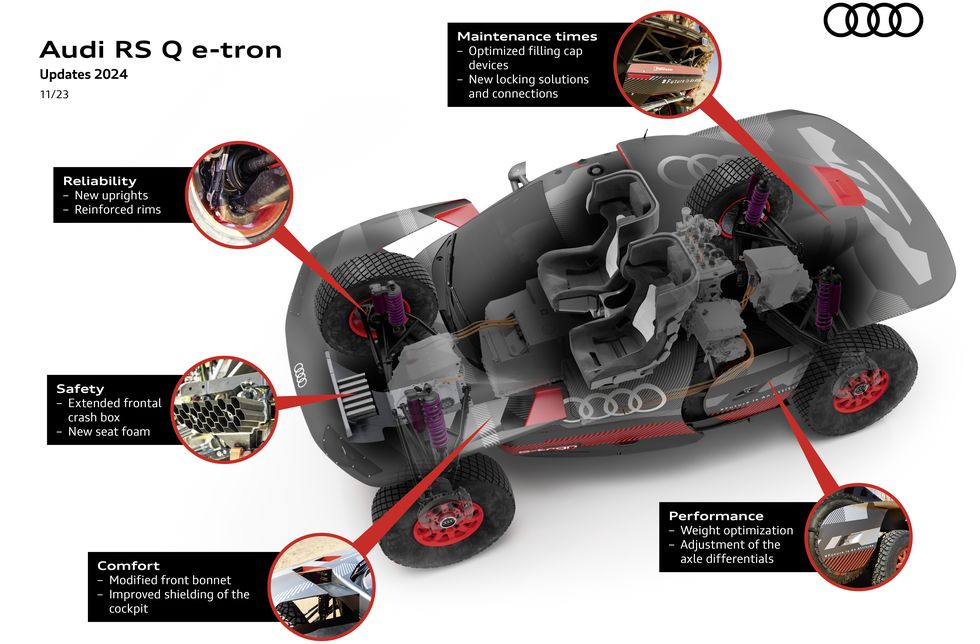Audi’s first two years of fielding a range-extended EV in the Dakar Rally were a mixed bag. In 2022 the RS Q e-tron piloted by rally veteran Stephane Peterhansel suffered serious suspension damage early on after hitting a rock, stranding the two-man crew, while another RS Q e-tron driven by Carlos Sainz had gotten lost.
The two mishaps had cost the team plenty, while also reconfirming Dakar’s reputation for unpredictability, even in the middle of a vast desert landscape.
In January 2023 Audi came back, leading the race for three days and achieving 14 podium finishes, but also suffering a series of setbacks due to punctures. In the end, two of the three cars did not finish due to punctures rather than mechanical failures.
Now, with several lessons learned, the automaker is putting the finishing touches on the third iteration of the RS Q e-tron that will be headed back to Saudi Arabia’s empty quarter in a matter of weeks, after testing in Morocco in October of this year.
How will the car be different this time around?
The team examined the accidents suffered by the cars of Carlos Sainz and Stephane Peterhansel, deciding to revamp the suspension with specific qualities in mind, while also extending the CFRP crash box at the front end of the chassis to better absorb energy during frontal landings.
“Our goal was to reduce the peak vertical acceleration during landings after big jumps,” said Dr. Leonardo Pascali, the project’s new technical director.
The Audi team also worked to better distribute the load during landings, adjusting the dampers, springs, and the bump stop in the chassis while also tweaking seat design for the pilot and co-pilot.
The punctures suffered by the cars in 2023, in which penetrating stones were trapped between the wheel rim bed, the brake disc, and upright, have also forced some rethinking.
Ahead of the 2024 rally, Audi engineers have introduced new fastening elements for the uprights, providing greater clearance that could help discard small rocks more efficiently, while also switching to a new generation of BF Goodrich tires with stronger sidewalls, although at the expense of greater tire weight.
The range-extended EV itself relies on a high-voltage battery paired with a 2.0-liter internal combustion TFSI engine and a generator. The motor-generator units (MGUs) at each axle were derived from the Audi e-tron FE07 Formula E car, with a third MGU acting as an energy converter to charge the battery from the TFSI engine.
“What the RS Q e-tron is fundamentally capable of has been demonstrated by our drivers and co-drivers with six stage victories and 22 other single-day podium results at the Dakar Rally since 2022,” said Rolf Michl, Head of Audi Motorsport. “Now it’s a matter of showing our performance as steadily as possible so that we can fight for top positions.”

Jay Ramey grew up around very strange European cars, and instead of seeking out something reliable and comfortable for his own personal use he has been drawn to the more adventurous side of the dependability spectrum. Despite being followed around by French cars for the past decade, he has somehow been able to avoid Citroën ownership, judging them too commonplace, and is currently looking at cars from the former Czechoslovakia. Jay has been with Autoweek since 2013.
Read the full article here



